NYYC 48
Sailboat specifications
The NYYC 48 is a 47’10” (14.57m) cruiser-racer sailboat designed by Sparkman & Stephens (United States). She was built between 1974 and 1979 by Nautor's Swan (Finland).
The NYYC 48 has also been marketed as Swan 47.
The NYYC 48 has also been marketed as Swan 47.
NYYC 48's main features
- Model
- NYYC 48
- Hull type
- Monohull
- Category
- Offshore cruiser-racer sailboat
- Sailboat builder
- Sailboat designer
- Country
- Finland
- Construction
- GRP (glass reinforced polyester):
- Hull: Single skin fiberglass polyester
- Deck: Sandwich fiberglass polyester - Number of hulls built
- About 70
- First built hull
- 1974
- Last built hull
- 1979
- Appendages
- Keel : fin without bulb
- Helm
- Single helm wheel
- Rudder
- Single rudder on skeg
- Unsinkable
- No
- Trailerable
- No
- Standard public price ex. VAT (indicative only)
- N/A €
NYYC 48's main dimensions
- Hull length
- 47’ 10”14.57 m
- Waterline length
- 36’ 4”11.05 m
- Beam (width)
- 13’ 8”4.19 m
- Draft
- 7’ 7”2.33 m
- Mast height from DWL
- 66’ 10”20.35 m
- Light displacement (MLC)
- 32408 lb14700 kg
- Ballast weight
- 15432 lb7000 kg
- Ballast type
- Lead
NYYC 48's rig and sails
- Upwind sail area
- 1366 ft²126.9 m²
- Downwind sail area
- 2652 ft²246.4 m²
- Mainsail area
- 446 ft²41.4 m²
- Genoa area
- 920 ft²85.5 m²
- Symmetric spinnaker area
- 2207 ft²205 m²
- IiFore triangle height (from mast foot to fore stay top attachment)
- 62’18.9 m
- JiFore triangle base (from mast foot to bottom of forestay)
- 19’ 10”6.04 m
- PiMainsail hoist measurement (from tack to head)
- 55’ 8”16.98 m
- EiMainsail foot measurement (from tack to clew)
- 16’4.88 m
- Rigging type
- Sloop Marconi masthead
- Mast configuration
- Keel stepped mast
- Rotating spars
- No
- Number of levels of spreaders
- 2
- Spreaders angle
- 0 °
- Spars construction
- Aluminum spars
- Standing rigging
- Single-strand (ROD) discontinuous
NYYC 48's performances
- IOR ratingiIOR, or International Offshore Rule, was a measurement rule system used internationally for ocean racing. It allows boats of different sizes and designs to race each other fairly. Therefore, by comparing these values, we can have an indication of the relative speed of 2 boats.
- 34.5
- Upwind sail area to displacementiThe ratio sail area to displacement is obtained by dividing the sail area by the boat's displaced volume to the power two-thirds.
The ratio sail area to displacement can be used to compare the relative sail plan of different sailboats no matter what their size.
Upwind: under 18 the ratio indicates a cruise oriented sailboat with limited performances especially in light wind, while over 25 it indicates a fast sailboat. - 228 ft²/T21.15 m²/T
- Downwind sail area to displacementiThe ratio sail area to displacement is obtained by dividing the sail area by the boat's displaced volume to the power two-thirds.
The ratio sail area to displacement can be used to compare the relative sail plan of different sailboats no matter what their size. - 442 ft²/T41.06 m²/T
- Displacement-length ratio (DLR)iThe Displacement Length Ratio (DLR) is a figure that points out the boat's weight compared to its waterline length. The DLR is obtained by dividing the boat's displacement in tons by the cube of one one-hundredth of the waterline length (in feet).
The DLR can be used to compare the relative mass of different sailboats no matter what their length:
a DLR less than 180 is indicative of a really light sailboat (race boat made for planning), while a DLR greater than 300 is indicative of a heavy cruising sailboat. - 309
- Ballast ratioiThe Ballast ratio is an indicator of stability; it is obtained by dividing the boat's displacement by the mass of the ballast. Since the stability depends also of the hull shapes and the position of the center of gravity, only the boats with similar ballast arrangements and hull shapes should be compared.
The higher the ballast ratio is, the greater is the stability. - 48 %
- Wetted area
- 506 ft²47 m²
- Critical hull speediAs a ship moves in the water, it creates standing waves that oppose its movement. This effect increases dramatically the resistance when the boat reaches a speed-length ratio (speed-length ratio is the ratio between the speed in knots and the square root of the waterline length in feet) of about 1.2 (corresponding to a Froude Number of 0.35) . This very sharp rise in resistance, between speed-length ratio of 1.2 to 1.5, is insurmountable for heavy sailboats and so becomes an apparent barrier. This leads to the concept of "hull speed".
The hull speed is obtained by multiplying the square root of the waterline length (in feet) by 1.34. - 8.07 knots
NYYC 48's auxiliary engine
- Engine(s)
- 1 inboard engine
- Engine(s) power
- 61 HP
- Fuel type
- Diesel
- Fuel tank capacity
- 52.8 gal200 liters
NYYC 48's accommodations and layout
- Cockpit
- Twin cockpit (center and closed aft)
- Cabin(s)
- 2
- Berth(s) (min./max.)
- 7 / 9
- Head(s)
- 2
- Freshwater tank capacity
- 92.5 gal350 liters
- Fridge/ice-box capacity
- 66 gal250 liters

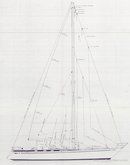

Nautor's Swan NYYC 48 sailplan - - 2/12
Picture extracted from the commercial documentation © Nautor's Swan
Picture extracted from the commercial documentation © Nautor's Swan


Nautor's Swan NYYC 48 layout - - 3/12
Picture extracted from the commercial documentation © Nautor's Swan
Picture extracted from the commercial documentation © Nautor's Swan


Nautor's Swan NYYC 48 layout - - 4/12
Picture extracted from the commercial documentation © Nautor's Swan
Picture extracted from the commercial documentation © Nautor's Swan


Nautor's Swan NYYC 48 layout - - 5/12
Picture extracted from the commercial documentation © Nautor's Swan
Picture extracted from the commercial documentation © Nautor's Swan


Nautor's Swan NYYC 48 layout - - 6/12
Picture extracted from the commercial documentation © Nautor's Swan
Picture extracted from the commercial documentation © Nautor's Swan
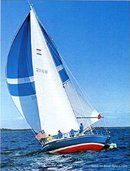

Nautor's Swan NYYC 48 sailing - - 7/12
Picture extracted from the commercial documentation © Nautor's Swan
Picture extracted from the commercial documentation © Nautor's Swan
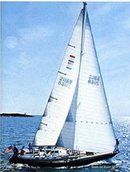

Nautor's Swan NYYC 48 sailing - - 8/12
Picture extracted from the commercial documentation © Nautor's Swan
Picture extracted from the commercial documentation © Nautor's Swan
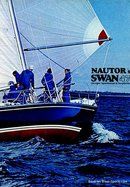

Nautor's Swan NYYC 48 sailing - - 9/12
Picture extracted from the commercial documentation © Nautor's Swan
Picture extracted from the commercial documentation © Nautor's Swan


Nautor's Swan NYYC 48 interior and accommodations - - 10/12
Picture extracted from the commercial documentation © Nautor's Swan
Picture extracted from the commercial documentation © Nautor's Swan
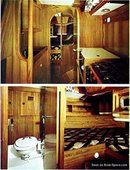

Nautor's Swan NYYC 48 interior and accommodations - - 11/12
Picture extracted from the commercial documentation © Nautor's Swan
Picture extracted from the commercial documentation © Nautor's Swan


Nautor's Swan NYYC 48 detail - - 12/12
Picture extracted from the commercial documentation © Nautor's Swan
Picture extracted from the commercial documentation © Nautor's Swan
Similar sailboats that may interest you:
Sailboats
First built hull
Hull length
1978
45’ 4”13.8 m
1990
45’ 7”13.9 m
1988
52’ 6”16 m
1988
44’ 1”13.44 m
1993
49’14.93 m
1987
51’ 10”15.78 m
1977
40’ 10”12.44 m
1980
42’12.8 m
1974
47’ 10”14.57 m
2000
52’ 6”16 m
2017
50’ 11”15.51 m
1984
44’13.4 m
1982
45’ 10”13.95 m
1985
49’ 11”15.22 m
1978
44’ 5”13.54 m